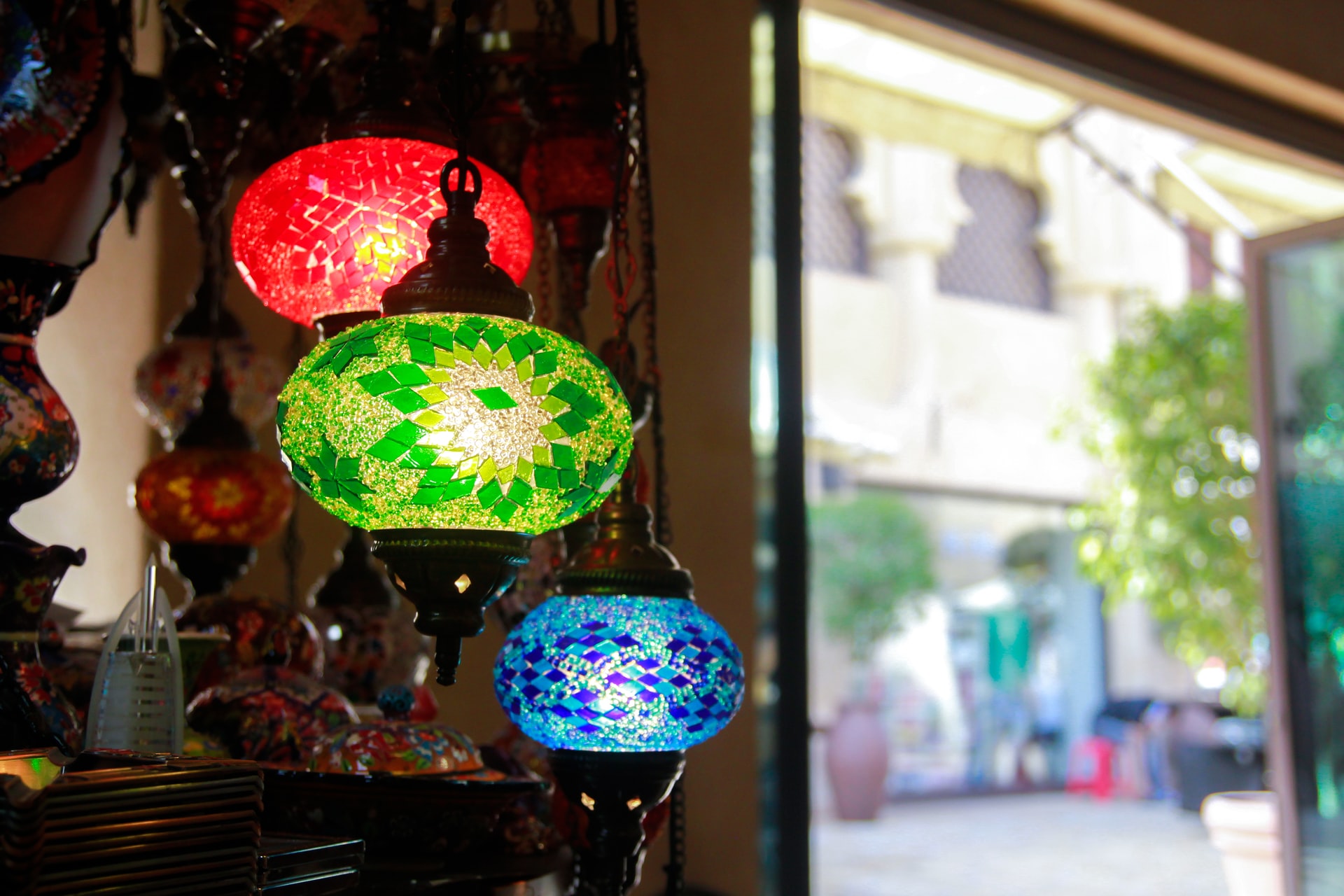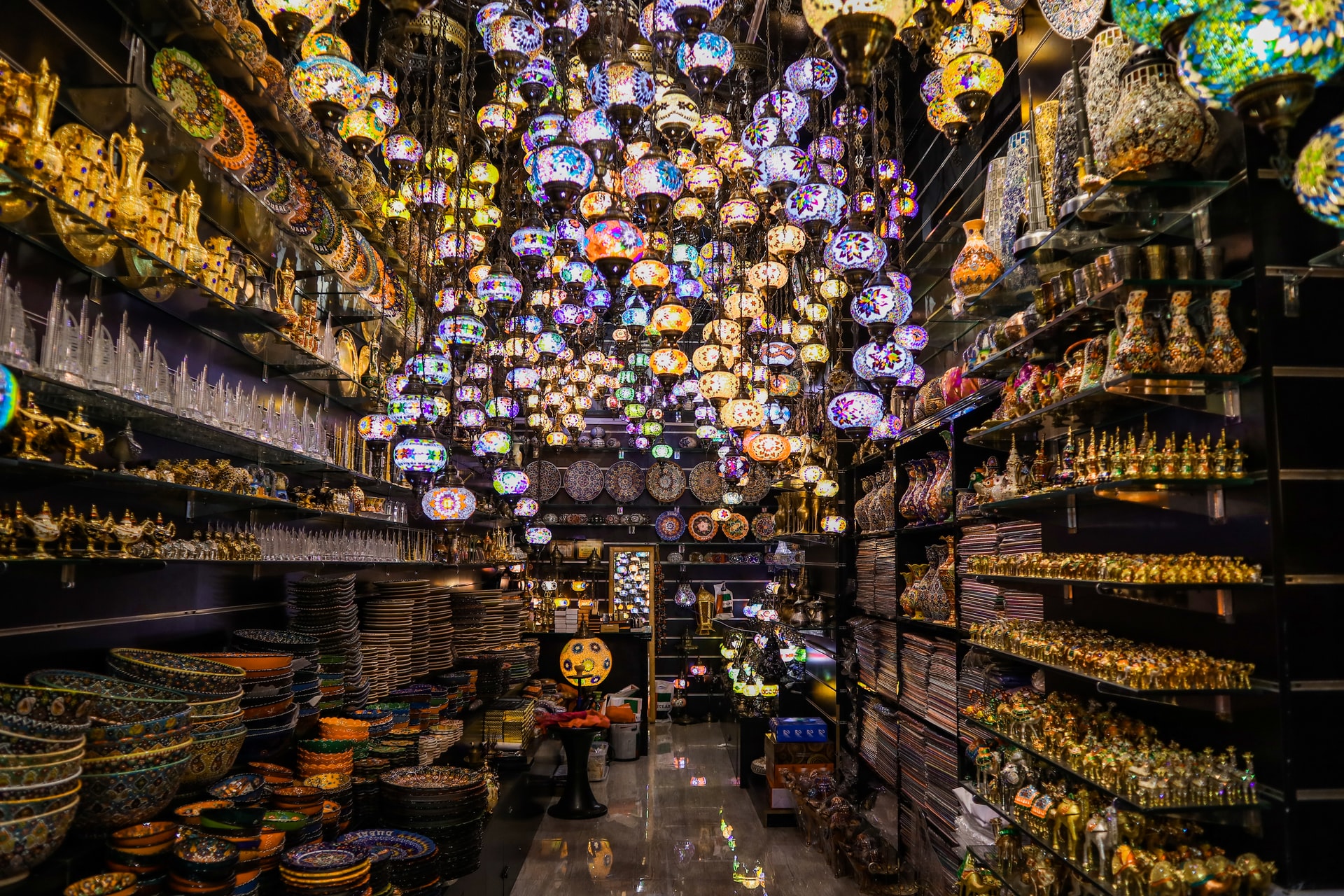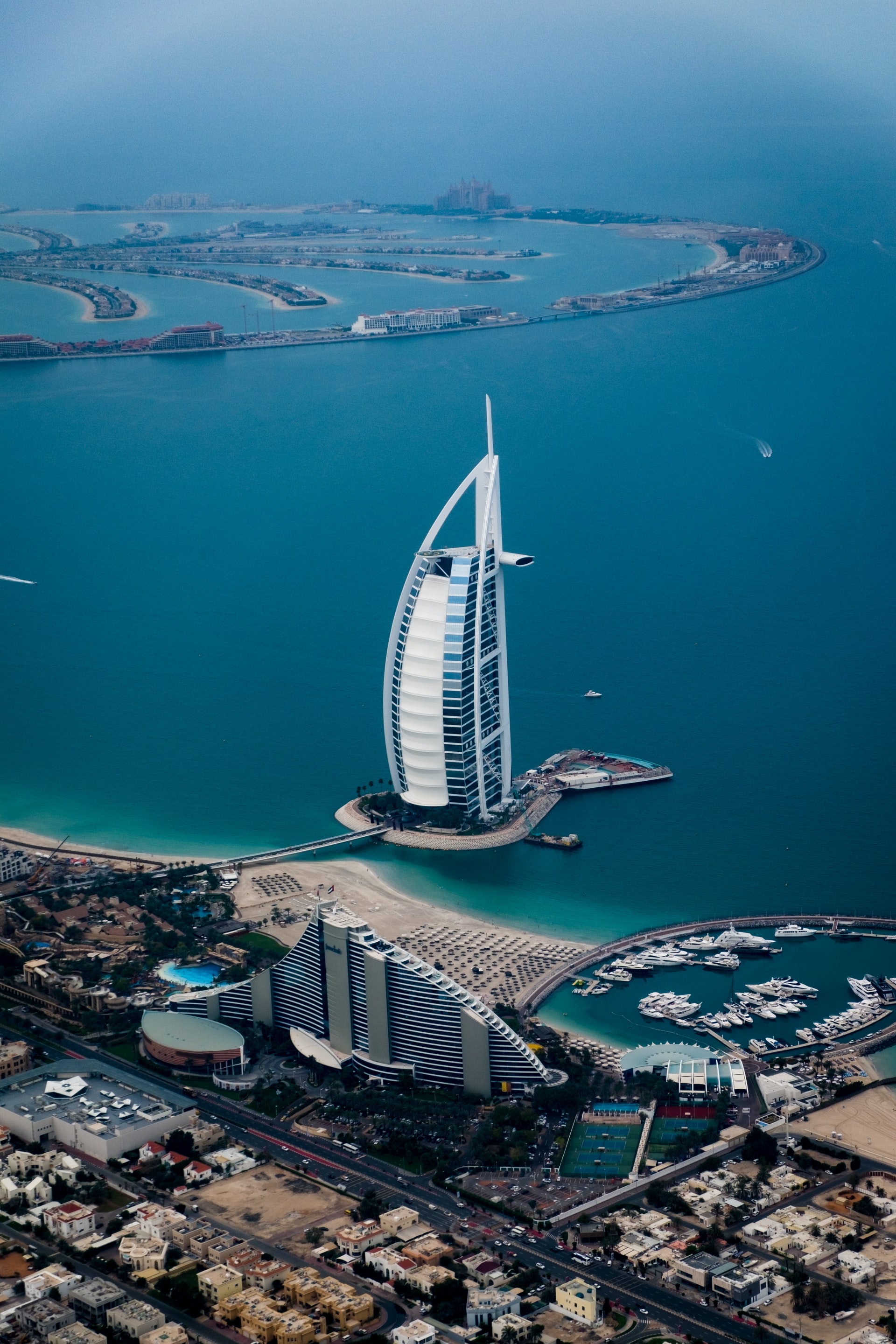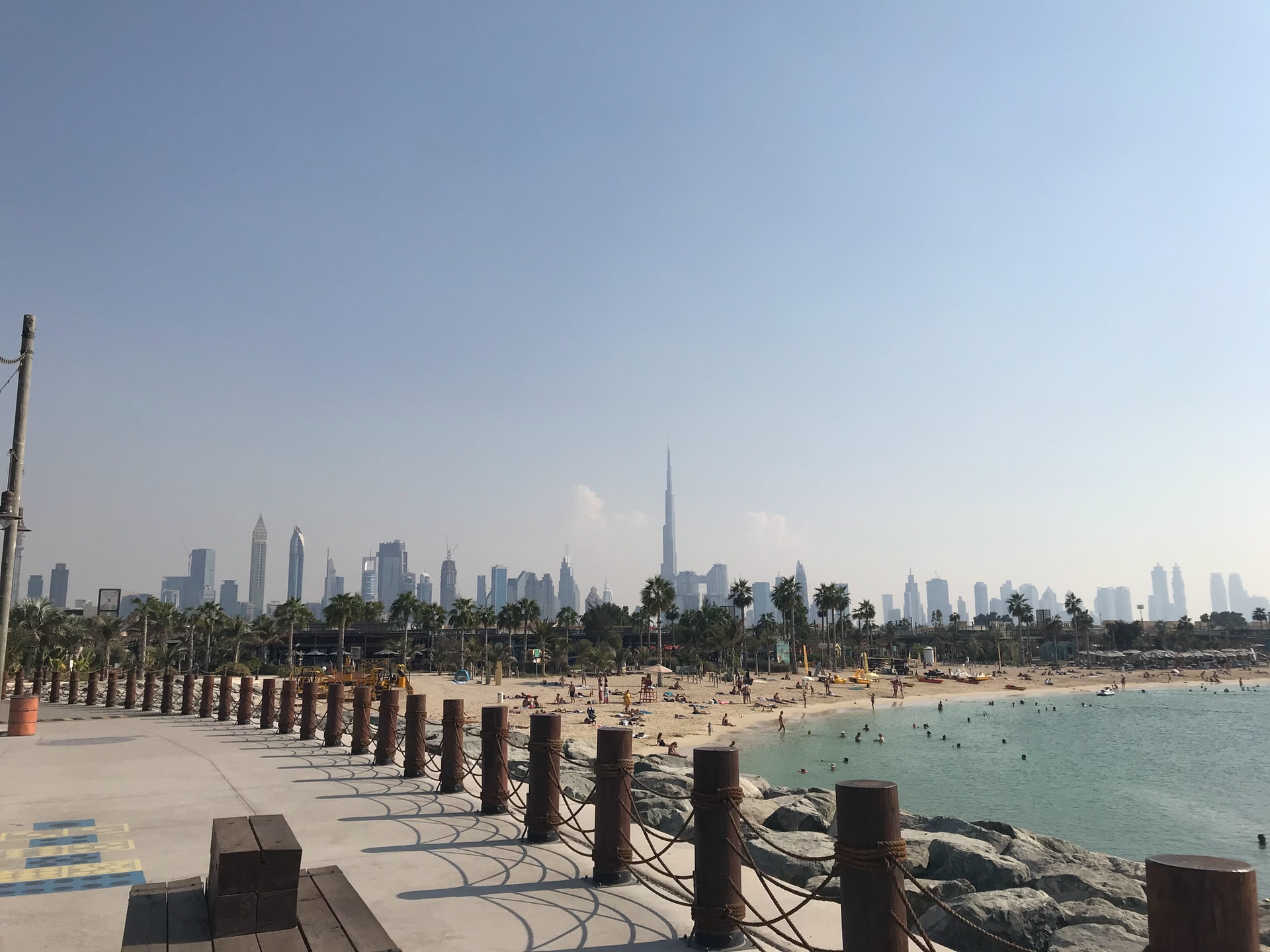Many visitors come to Dubai and spend most of their time in shopping malls. While Dubai’s are more sumptuous than most, there are shopping malls all over the world. What makes a visit to Dubai special is the chance to soak up Arabian culture – in style, Telegraph reports.
Dubai from above
There is no better way to take in Dubai and its audacious initiatives than from the air. Take a slow flight along the spectacular coast on a seaplane with Seawings (seawings.ae) or a more dramatic one from a helicopter with Heli Dubai (helidubai.com) or Alpha Tours (alphatoursdubai.com).
Aerial spectacles include the sail-shaped seven-star Burj Al Arab, surreal man-made island developments such as The Palms and The World, the skyscrapers of Sheikh Zayed Road, and the world’s tallest tower building – Burj Khalifa – with its head in the clouds.

Dubai Museum
Step back in time to appreciate Dubai’s history (and escape the heat) at this air-conditioned museum beneath the splendid Al Fahidi Fort – Dubai’s oldest building, constructed in 1787. Dubai was settled way back in the Bronze Age, with fine alabaster objects dating from 3,000BC to prove it.

You can also check out the first written reference to the sleepy fishing village and trading port, penned in 1580 by Venetian jeweller Gasparo Balbi who passed through seeking pearls. Or trust me on this and simply enjoy wandering among the kitsch exhibits, including life-size dioramas and costumed mannequins.
Address: Al-Fahidi Street, Bur Dubai
Contact: 00 971 4 353 1862; dubaiculture.gov.ae
Opening times: Sat-Thur, 8.30am-8.30pm; Fri, 2.30pm-8.30pm
Admission: AED3 adults, AED1 children
Bastakiya
Dubai’s oldest buildings are in the atmospheric Persian quarter called Bastakiya, a five-minute mosey from Dubai Museum. Dubai has very few historic buildings because the Bedouin were nomads who erected goat-hair tents when they wanted to set up home, while the pearl divers and fishermen lived in flimsy barasti (palm-frond huts) along Dubai Creek.

The first to construct solid buildings were Persian merchants from Bastak, southern Iran, who built these handsome homes boasting barjeel (wind towers, an early form of air conditioning) from gypsum, coral and sand. Crumbling until the government rescued them a decade ago, many have been reconstructed, and are now home to art galleries, cafés and boutique hotels. In the cooler winter months, the quarter hosts markets in its narrow alleys.
Sheikh Mohamed Centre for Cultural Understanding
Located in an elegant old two-storey courtyard residence, this excellent centre does a terrific job of introducing visitors and expats to Islam and Emirati culture. It offers walking tours of Bastakiya, Arabic classes and Jumeirah Mosque tours (including a demonstration of ablutions and prayer, and a Q&A session on Islam; Sat-Thurs 10am). The centre also hosts cultural meals, involving an Emirati feast and introduction to local traditions and ways of life, as well as Fuala – the Emirati custom of welcoming guests with tea and pastries – combined with a visit to Diwan Mosque. Breakfast (Mon and Wed, 10am), Brunch (Sat, 10.30am), Lunch (Sun-Tue, 1pm), Dinner (Sun, Tues, Thurs, 7pm) and Fuala (Sun, Tues, Thurs, 4.30pm).

Address: House 26, Al Mussalah Road, Bastakiya Quarter, Bur Dubai
Contact: 00 971 4 353 6666; cultures.ae
Opening times: Sun-Thur 9am-5pm, Sat 9am-1pm
Admission: no entry fee, but costs for activities vary; check website for details
Bur Dubai Textile Souq and Shindagha
A five-minute stroll from Dubai Museum is the breezy Bur Dubai Textile Souq, and a further 10-minute walk along the waterfront, Shindagha, the oldest part of Dubai and site of the early fishing village.
While geographically it seems logical to head here after your visit to Dubai Museum, it’s more fun in the evening when it’s considerably cooler and the locals come to bargain at the souq, power-walk along the waterside, and – during winter and Ramadan especially – enjoy activities such as rifle-throwing contests and traditional song and dance at the Heritage and Diving Village.
 \
\
During the day, Shindagha is deserted apart from tour groups. The Shindagha waterfront is also an enchanting spot to try some fragrant sheesha or tuck into Arabic mezze (try KanZaman, next to the Village) while you watch the fairy-lit dhows cruise along the Creek.
Heritage and Diving Village (00 971 4 393 7151, dubaiculture.gov.ae). Open Sun-Thurs, 8am-10pm; Fri & Sat, 3pm-10pm. Free admission.
Deira Souqs
If you’ve been visiting Dubai Museum, Bastakiya and Shindagha, it’s convenient to hop on an abra (small wooden boat) to visit the Deira side and the chaotic, ramshackle souqs for which Dubai is famous.
Briefly stop by the Spice Souq for the architecture – sadly, in recent years most of the spice shops have given way to stalls selling souvenirs, trinkets and toys – then get lost in the narrow lanes on your way to the Gold Souq.
There you can gawp at the glittering displays of jewellery in the shop windows. Gold is not the bargain it once was, but the atmosphere is unbeatable.

Open Sat-Thur, 9am-12 noon and 5pm-10pm; Fri, 5pm-10pm. Note that these times are approximate, so give or take 30-60 minutes depending on the individual business. During Ramadan, shops close for longer during the day, open after the evening prayer, and stay open until midnight.
Al-Ahmadiya School and Heritage House
A few minutes’ walk from the Gold Souq in Al Ras area are two small but interesting museums set in splendid, adjoining old courtyard buildings. Al-Ahmadiya, built in the 1890s, was Dubai’s first school and is now an absorbing museum of education.
Heritage House, once the residence of a pearling merchant, also dates from the 1890s, and has a lovely courtyard and an array of rooms decorated in period style with more life-size costumed mannequins.

Contact: 00 971 4 226 0286; dubaiculture.gov.ae
Opening times: Sat-Thur, 8.30am-7.30pm; Fri, 2.30pm-8.30pm
Admission: free
Jumeirah
The well-off, low-rise suburbs that sprawl along the beach all the way from the dilapidated neighbourhood of Satwa come under the umbrella of Jumeirah. Jumeirah is actually sub-divided into the neighbourhoods of Jumeirah 1, 2, 3, Umm Suqeim, and so on, but as a visitor you don’t need to worry yourself with this.

You can drive, cab it, or take a bus along the long stretch in 30-40 minutes depending on traffic. Don’t even think about walking, especially in summer, or you’ll find yourself at one of the myriad doctor’s clinics or small private hospitals on the way.
The area features low-rise villas with luxuriant gardens and enormous sheikh’s palaces hidden behind high walls. Jumeirah is best visited in the morning, when you can begin with a Jumeirah Mosque tour (book through the Sheikh Mohammed Centre for Cultural Understanding above), before beach-hopping. There are small malls with cafés and restaurants on the way.
Etihad Museum
From a collection of impoverished sheikhdoms to a modern unified country, few nations have experienced such rapid and monumental development as the United Arab Emirates. This excellent new museum tells the story of the formation of the UAE in 1971, prompted by the discovery of oil in the 1950s and the withdrawal of the British in 1968.
Located next to the circular Union House in Jumeirah, the striking structure looks like a manuscript with seven tapering golden columns representing the pens used to sign the unification agreement. Photos, films, documents, personal artefacts and interactive displays provide an interesting insight into life before and after unification.

Address: 2nd of December Street, Jumeirah 1
Contact: 00971 4 515 5771, etihadmuseum.dubaiculture.ae
Opening times: 10am-8pm
Price: AED25 adults and AED10 children
Dubai’s beaches
Dubai boasts some brilliant beaches, which is why most visitors to the city check into a five-star resort with its own private stretch of squeaky white sand, where you can pull up a sunbed within splashing distance of the aquamarine sea.

The water is nice and warm too. Kite Beach, so-named for its resident kite-surfers, is one of the most popular public beaches. There’s a promenade with a handful of cool cafes and the famous Salt (find-salt.com) burger van, along with changing facilities and showers, watersports, a skatepark and elevated wire obstacle course. Further along the coast is Sunset Beach/Umm Suqeim Beach, which boasts stunning views of Burj Al Arab (which make it popular for photo ops too).
Another firm favourite is the stretch of sand at Jumeirah Beach Residences. Backed by a low-rise collection of restaurants, cafes and boutiques, There are spotless changing facilities with showers, watersports and sunbeds for rent (AED110 per day, including an umbrella and towel).
Madinat Jumeirah
Dozens of shopping malls have appeared since Madinat Jumeirah opened, from the opulent Mall of the Emirates to the monumental Dubai Mall, but this is still one of my favourites. A contemporary reincarnation of a mythical old Arabian city, it has beautiful architecture and none of the bustle of the bigger malls, making it a pleasant low-key place to shop.
There is quality shopping – everything from designer brands to carpet shops, as well as myriad eating and drinking opportunities, from coffee shops to Moroccan, Arabic, Asian and Italian restaurants, as well as rowdy pubs and chic bars.
Everywhere you look, you’re gazing across man-made canals and waterways to Burj Al Arab. There’s also a good theatre. Shops open daily 10am-10pm; restaurant and bar times vary and should be checked with individual restaurants.

Contact: 00971 4 366 8888, jumeirah.com
Opening times: shops 10am-11pm; restaurant and bar times vary and should be checked with individual restaurants
Burj Khalifa
Soaring 828-metres into the sky, the world’s tallest building is indeed a sight to behold. A high-speed elevator delivers you to the ‘At the Top’ observation decks at level 125 (456 metres above the ground) or level 148 (555 metres), and floor-to-ceiling glass provides 360-degree views of the sea of skyscrapers below.
If you’re looking to save money, pre-purchase a ticket online, visit outside of the prime viewing hours of 3.30pm-6pm, and skip level 148 – you’ll fork out more than twice the price of level 125 for a similar view.
You can also admire the view from At.mosphere (00971 4 888 3828, atmosphereburjkhalifa.com), a cocktail lounge and restaurant on Level 122. Call ahead and book a table by the window so you can also take in the dancing fountain show way down below, but be aware of the hefty minimum spend per person ranging from AED200 at breakfast to AED490 at lunchtime.

Address: Burj Khalifa, Dubai Mall, 1 Emaar Boulevard, Downtown Dubai
Contact: 00 971 4 888 8888/8124; burjkhalifa.ae
Opening times: Generally 8am-11pm, although check the website as these change seasonally (last entry 45 minutes before closure)
Admission: Advance tickets for Level 125 cost AED125 adults and AED95 children (4-12 years) during non-prime hours, and AED200 adults and AED160 children during prime hours. Tickets purchased upon arrival cost AED300 adults and children. Tickets for Level 148 must be purchased in advance and cost AED350 adults and children (4-12 years) during non-prime hours, and AED500 adults and children during prime hours. Children under 4 are free of charge.
Theme parks
The UAE is aiming to become a global theme park hub to rival Orlando, with eight parks set to open by 2019.
In Dubai, IMG Worlds of Adventure (600 500 962 or 00971 4 403 8888, imgworlds.com) is the world’s largest indoor theme park. Spread over an area equivalent to 28 football fields, the park is split into four themed zones with rides inspired by Cartoon Network shows and Marvel superheroes, along with prehistoric jungle trails and a labyrinth of city streets.

In the south of the city, Dubai Parks and Resorts (800 262 9464 or 971 4 820 0000, dubaiparksandresorts.com) is a sprawling playground that’s home to three theme parks – Motiongate Dubai, Bollywood Parks Dubai and Legoland Dubai – as well as a tot-friendly Legoland Waterpark. Top picks include the Hollywood-inspired rollercoasters at Motiongate Dubai and the colourful and catchy Bollywood-themed musical at Bollywood Parks Dubai’s beautiful Taj Mahal-esque theatre.
Day trips
Desert escapes
Save some dirhams to spend a night or two (three if the budget allows) at a luxurious desert retreat such as Bab Al Shams or Al Maha, A Luxury Collection Desert Resort & Spa, where the Arabian atmosphere and desert scenery is second to none. A stay at one of these resorts means you can skip the popular but very touristy desert safaris, and do them in style at Bab Al Shams or Al Maha instead. I’m talking desert drives, camel rides, falconry shows, henna tattoos, Arabic feasts, and perhaps a belly dancer or two. At the eco-friendly Al Maha, part of the Dubai Desert Conservation Area, you can also see rare Arabian wildlife.
Al Ain
Hire a car for a drive out to the oasis town of Al Ain for a night or two. Significantly more low-key and laidback than Dubai, Al Ain is home to some wonderful forts, tranquil date-palm oases, an old-fashioned but interesting Archaeological Museum, a very good zoo, and small but fascinating souqs. It’s worlds away from Dubai; fans of Al Ain say this is the real UAE.


